The 1982 movie “Poltergeist” is famous for its scary scenes and spooky atmosphere. Directed by Tobe Hooper and produced by Steven Spielberg, this horror classic has left a lasting impression on audiences. One shocking fact about the film is that it reportedly used real human skeletons as props. This revelation adds an extra layer of creepiness to the already terrifying movie.
Using real skeletons in the movie has sparked a lot of debates and discussions. Many people wonder why the filmmakers chose to use real bones instead of fake ones. The main reason was cost; real skeletons were cheaper than creating realistic replicas. This decision, however, raises important ethical questions about the treatment of human remains in the film industry.
The cast and crew had mixed feelings about using real skeletons. Some were disturbed by the idea, while others thought it added to the film’s realism. JoBeth Williams, who played Diane Freeling, mentioned feeling uncomfortable during scenes with the skeletons. The unease on set contributed to the film’s eerie atmosphere, making the horror feel even more real.
The use of real skeletons in “Poltergeist” has had a lasting impact on how movies are made today. Modern filmmakers now have advanced technology like CGI to create realistic effects without ethical concerns. The controversy surrounding “Poltergeist” has pushed the industry to adopt stricter guidelines and prioritize ethical practices in filmmaking.
Origins of the Claim
After “Poltergeist” was released in 1982, rumors began to spread about the use of real skeletons in the movie. The most talked-about scene is when JoBeth Williams’ character, Diane Freeling, is surrounded by skeletons in a pool. People started wondering if the bones in that scene were real, and these rumors quickly gained attention.
The claim that real skeletons were used in “Poltergeist” mainly comes from interviews and statements by the cast and crew. JoBeth Williams mentioned feeling uneasy during the filming of the pool scene because she believed the skeletons were real. This added to the speculation and made people more curious about what really happened behind the scenes.
Craig Reardon, the special effects makeup artist for the film, confirmed in a deposition that real skeletons were used. He explained that using real bones was cheaper than making fake ones. This choice was common in the movie industry at the time, but it sparked a lot of debate about whether it was the right thing to do.
Steven Spielberg and other crew members have also talked about the use of real skeletons. Some crew members felt uncomfortable working with real human remains, while others thought it made the movie scarier. This mix of opinions shows how controversial the decision was, even among those who worked on the film.
The origins of the claim about real skeletons in “Poltergeist” highlight the complexities of filmmaking and the ethical questions it can raise. The rumors and confirmations from those involved have kept this story alive, making “Poltergeist” not just a classic horror movie, but also a topic of ongoing discussion and intrigue.
Unveiling the Truth about the Authentic Skeletons
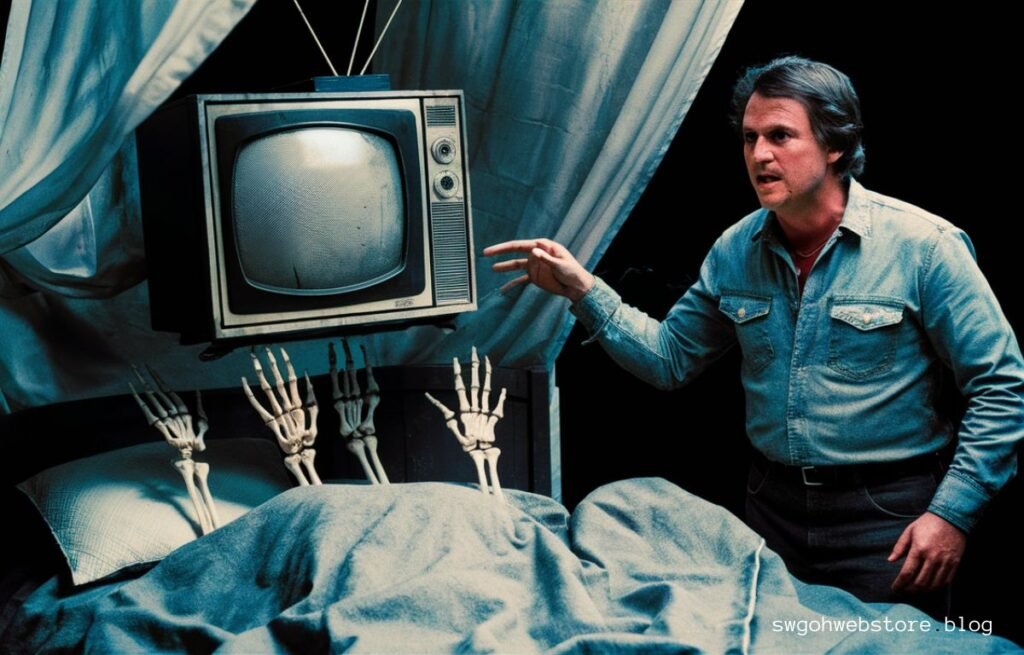
The truth about the real skeletons used in “Poltergeist” adds a chilling detail to the movie’s production. During the filming, the production team chose real skeletons for certain scenes because they were cheaper than creating realistic replicas. This decision, while practical, was not widely known at the time and has only come to light through interviews and statements from the cast and crew.
JoBeth Williams, who played Diane Freeling, shared her discomfort with the skeletons in a memorable pool scene. She revealed that the production team used real human bones, which made her feel uneasy during filming. Her statements have been a significant source of information about the use of authentic skeletons in the movie.
Craig Reardon, the special effects makeup artist, confirmed that real skeletons were used because they were more cost-effective. He mentioned that obtaining human bones for medical purposes was a common practice, and these were repurposed for the movie. This practical choice aimed to enhance the film’s realism but has since raised ethical concerns.
Other cast and crew members have echoed similar sentiments. While some appreciated the realistic touch the skeletons added, others found the idea disturbing. This mix of reactions highlights the controversial nature of using real human remains in filmmaking and the emotional impact it had on those involved.
Unveiling the truth about the real skeletons in “Poltergeist” not only deepens the film’s eerie reputation but also prompts important ethical discussions. The revelation has led to increased awareness and stricter guidelines in the film industry to ensure that such practices are not repeated. This story continues to intrigue and unsettle fans, adding to the movie’s legacy as a horror classic.
Also Read: Mystery of Skin:ivl5ranfvva= fortnite
The 1982 Movie Poltergeist Used Real Skeletons As – Tymoff The Unveiled Proof
The proof that real skeletons were used in “Poltergeist” comes from several sources, mainly the cast and crew. JoBeth Williams, who played Diane Freeling, has been vocal about her experiences on set. She shared that she felt uncomfortable during scenes with the skeletons, believing they were real. Her comments have been a key piece of evidence in the ongoing discussion.
Craig Reardon, the special effects makeup artist for the film, confirmed in a legal deposition that real human skeletons were indeed used. He explained that at the time, real skeletons were cheaper to obtain than making realistic fake ones. Reardon’s statements provided concrete evidence supporting the claims that have long circulated about the movie.
Steven Spielberg and other crew members have also addressed the use of real skeletons. Spielberg acknowledged that real bones were used, which added to the movie’s authenticity. This confirmation from the film’s producer helped solidify the claims and provided further proof of the unsettling production choice.
Despite these confirmations, not everyone involved in the movie has spoken out. Some cast and crew members have remained silent or have not confirmed the use of real skeletons, adding a layer of mystery to the story. However, the statements from key figures like Williams, Reardon, and Spielberg have given enough proof to believe that the skeletons were indeed real.
The unveiled proof about the use of real skeletons in “Poltergeist” has had a lasting impact on how movies are made today. It has sparked important ethical discussions and led to stricter guidelines in the industry. This revelation continues to intrigue fans and adds a haunting detail to the legacy of the classic horror film.
Insights from Spielberg and Crew Responses
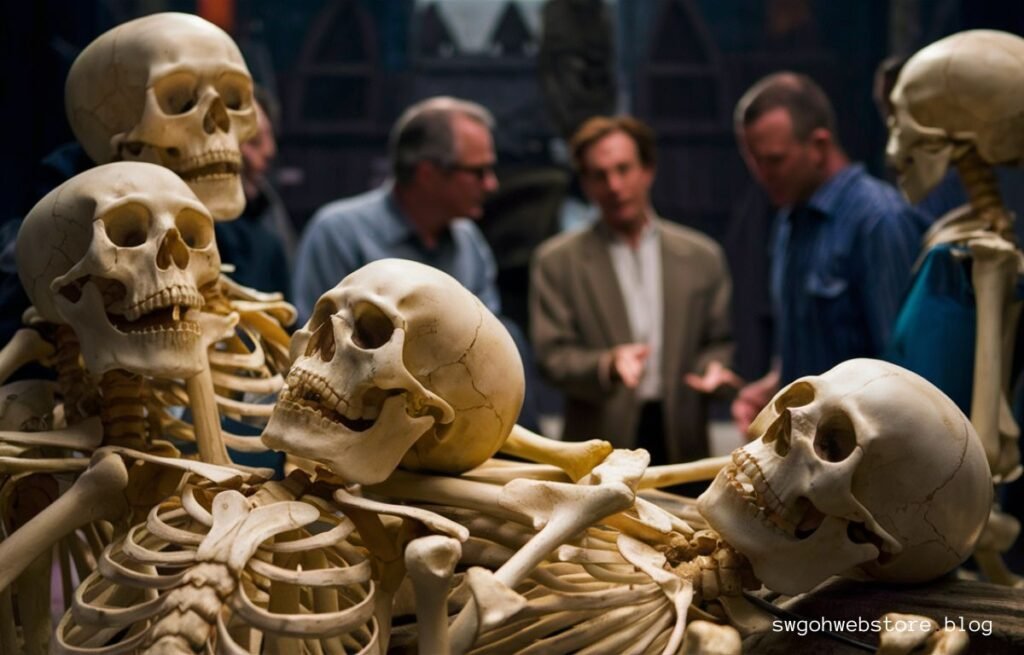
Steven Spielberg, who produced “Poltergeist,” has given important insights into the use of real skeletons in the movie. He admitted that real human bones were used because they looked more realistic on camera and were cheaper than creating fake ones. Spielberg’s admission has been a key factor in confirming the rumors about the skeletons, adding credibility to the claims.
The crew members had mixed reactions to using real skeletons. Some found it fascinating and believed it added a unique realism to the movie. Others, however, were disturbed by the idea of working with real human remains. This range of reactions shows how controversial the decision was, even among those who were directly involved in the film’s production.
JoBeth Williams, who played Diane Freeling, expressed her discomfort during scenes with the skeletons. She felt uneasy knowing that the bones were real, which made her experience on set more unsettling. Williams’ perspective highlights the emotional impact that this decision had on the actors, contributing to the film’s eerie atmosphere.
Craig Reardon, the special effects makeup artist, explained that the decision to use real skeletons was purely practical. He noted that obtaining real skeletons was common in the industry at the time, as they were readily available and cost-effective. Reardon’s explanation provides context for why this choice was made, even though it raises ethical concerns today.
Overall, the insights from Spielberg and the crew reveal a complex picture of the decision to use real skeletons in “Poltergeist.” While it added to the film’s realism, it also brought discomfort and ethical questions. These responses have helped shape the ongoing conversation about responsible filmmaking and the importance of considering the emotional and ethical implications of production choices.
The Influence on the Film Industry
The use of real skeletons in “Poltergeist” has had a significant impact on the film industry. This revelation raised important ethical questions about the treatment of human remains in movies. The controversy pushed filmmakers to rethink their practices and prioritize ethical considerations when creating realistic props and effects.
As a result of the “Poltergeist” controversy, the film industry began implementing stricter guidelines. These guidelines ensure that human remains are treated with respect and that alternatives, like synthetic materials or digital effects, are used whenever possible. This shift has helped prevent similar ethical issues from arising in future productions.
The impact of “Poltergeist” also influenced how special effects are created in horror movies. Advances in technology now allow filmmakers to achieve high levels of realism without resorting to questionable methods. CGI and sophisticated animatronics have become standard tools, making it easier to create convincing horror scenes ethically.
The controversy also sparked discussions about transparency in filmmaking. Audiences and advocacy groups called for more openness about how films are made, especially when dealing with sensitive subjects. This demand for transparency has led to better communication between filmmakers and the public, promoting a more ethical approach to movie production.
Overall, the 1982 Movie Poltergeist Used Real Skeletons As – Tymoff has had a lasting influence on the film industry. It prompted necessary changes in ethical standards and practices, ensuring that future films are made with greater respect for human dignity. The legacy of “Poltergeist” serves as a reminder of the importance of ethical considerations in the pursuit of cinematic realism.
Contemporary Film Production and Ethical Standards
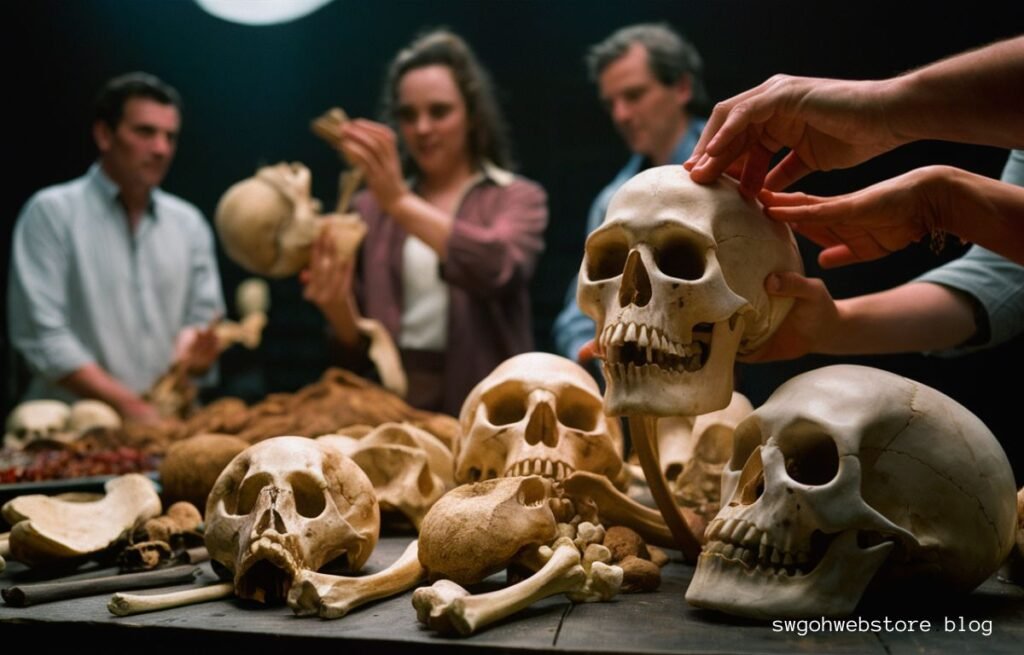
In today’s film industry, ethical standards have become a crucial part of movie production. Advances in technology, like CGI and high-quality animatronics, have made it easier to create realistic effects without using real human remains. This shift has helped filmmakers produce convincing scenes while avoiding the ethical dilemmas that arose with films like “Poltergeist.”
Modern filmmakers are more aware of the importance of treating all materials used in production with respect. Strict guidelines and regulations are now in place to ensure that props, especially those that resemble human remains, are sourced and used ethically. This includes obtaining proper permissions and using synthetic alternatives whenever possible.
Transparency in filmmaking has also improved significantly. Filmmakers are now expected to be open about their methods, especially when dealing with sensitive subjects. This transparency helps build trust with audiences and ensures that ethical standards are maintained throughout the production process.
Ethical training and awareness have become standard practices in the industry. Production teams are educated about the importance of ethical considerations and the impact of their choices. This education helps prevent situations like the one in “Poltergeist” and ensures that all crew members understand the significance of respecting ethical guidelines.
Overall, contemporary film production places a strong emphasis on ethical standards. By leveraging new technologies and fostering a culture of transparency and respect, the film industry has made significant strides in ensuring that movies are made responsibly. These advancements help create a more ethical and respectful environment for both filmmakers and audiences.
Also Read: Securing the Future with Ztec100.com
The Disturbing Trend of Fatalities After Production
After the release of “Poltergeist,” a series of tragic events befell several cast members, leading to rumors of a curse associated with the film. Dominique Dunne, who played the older sister, was tragically murdered by her boyfriend in 1982, shortly after the movie’s release. This shocking event was the first of several unfortunate incidents that gave rise to the eerie reputation surrounding the film.
In 1988, Heather O’Rourke, who played the young Carol Anne, died unexpectedly at the age of twelve due to complications from a misdiagnosed illness. Her death deeply affected fans and added to the unsettling lore of the “Poltergeist” curse. The loss of such a young star further fueled the notion that the film was surrounded by misfortune.
Other cast members also faced untimely deaths, contributing to the film’s haunted reputation. Julian Beck, who played the evil spirit in “Poltergeist II,” died of stomach cancer in 1985, and Will Sampson, who performed an on-set exorcism during the sequel’s production, passed away from complications after surgery in 1987. These deaths seemed to perpetuate the idea that the film was cursed.
The series of fatalities has led to a lasting fascination and fear surrounding the “Poltergeist” movies. While many believe these incidents are mere coincidences, the pattern of tragedies has undeniably left a mark on the film’s legacy. Fans and film historians continue to discuss and speculate about the so-called curse, adding to the film’s mystique.
Ultimately, the disturbing trend of fatalities after the production of “Poltergeist” has contributed to its status as a legendary horror film. The combination of real-life tragedies and the movie’s eerie content creates a compelling and unsettling narrative that continues to captivate and haunt audiences to this day.
Exploring Controversy of the 1982 Movie Poltergeist Used Real Skeletons As – Tymoff
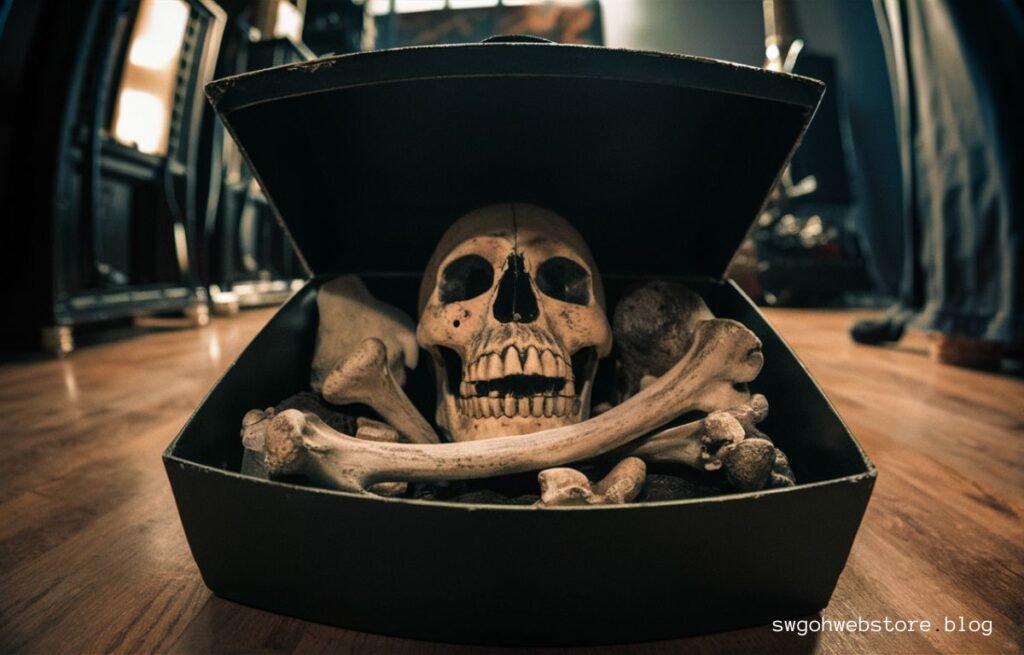
The 1982 Movie Poltergeist Used Real Skeletons As – Tymoff has sparked significant controversy. When it was revealed that the filmmakers chose real human bones for certain scenes, it raised many ethical questions. This decision was mainly made to achieve more realistic effects while keeping production costs low. However, it led to public outcry and debates about the morality of using actual human remains in films.
The public’s reaction to this revelation was strong. Many people found it disturbing and disrespectful to use real skeletons as props. This led to discussions about the boundaries of artistic expression and the importance of respecting human dignity. The controversy highlighted the need for ethical guidelines in the film industry, ensuring that similar choices are avoided in the future.
Filmmakers and industry professionals also weighed in on the controversy. Some defended the decision, citing practical reasons and industry norms at the time. Others, however, criticized it, emphasizing the emotional and ethical implications of using real human remains. This divide in opinions showcased the complex nature of ethical decision-making in filmmaking.
As a result of the controversy, there has been a push for more transparency in movie production. Audiences now expect filmmakers to be open about their methods, especially when dealing with sensitive materials. This demand for transparency has helped drive changes in industry practices, promoting more ethical and respectful approaches to creating realistic effects in films.
Overall, the controversy surrounding “Poltergeist” using real skeletons has had a lasting impact on the film industry. It has prompted important conversations about ethics, transparency, and the treatment of human remains in movies. These discussions continue to influence how films are made today, ensuring that ethical standards are upheld in the pursuit of artistic realism.
The Enduring Impact of the Departed Actors
The tragic deaths of several actors associated with “Poltergeist” have left a lasting impact on both the film industry and audiences. Dominique Dunne, who played the older sister Dana, was murdered shortly after the film’s release in 1982. Her untimely death shocked fans and cast a somber shadow over the movie’s success.
Heather O’Rourke, who portrayed Carol Anne, the young girl in the film, passed away in 1988 at the age of twelve. Her death from a misdiagnosed illness added to the film’s tragic narrative and raised questions about the alleged curse surrounding the franchise.
Julian Beck, known for his role as the malevolent spirit Kane in “Poltergeist II,” succumbed to stomach cancer in 1985. His death, along with others connected to the film, contributed to the belief in a “Poltergeist curse,” which has become part of the film’s enduring legacy.
Will Sampson, who played the shaman in “Poltergeist II,” passed away in 1987 due to complications from surgery. His involvement in the film and subsequent death further fueled speculation about supernatural repercussions associated with the franchise.
These tragedies have perpetuated the belief that the “Poltergeist” movies are cursed, influencing how the public perceives the films and their impact on those involved. The enduring impact of the departed actors serves as a poignant reminder of the fragile nature of life and the profound effect that films can have beyond their on-screen narratives.
The Emotional Toll on Cast and Crew

The production of “Poltergeist” took a significant emotional toll on its cast and crew, exacerbated by the unsettling use of real skeletons as props. The decision to employ authentic human remains added a layer of discomfort and unease to an already intense filming process.
Actors, such as JoBeth Williams who portrayed Diane Freeling, have spoken about their discomfort with the presence of real skeletons on set. This discomfort reflects the ethical and emotional dilemmas faced by those involved in the production.
The atmosphere during filming was tense and somber, with many cast members reportedly feeling uneasy even after the cameras stopped rolling. The eerie nature of the film’s subject matter, combined with the use of real skeletons, contributed to a palpable sense of unease among the crew.
The emotional impact extended beyond the filming process. Reports of an on-set exorcism performed by Will Sampson during the sequel’s production highlight the lingering effects of using real human remains in a horror film setting.
Overall, the emotional toll on the cast and crew of “Poltergeist” underscores the ethical considerations and psychological effects involved in filmmaking. It serves as a reminder of the importance of creating a respectful and supportive environment on set, especially when dealing with sensitive materials and themes.
The Emotional Toll on Cast and Crew
The production of “Poltergeist” took a significant emotional toll on its cast and crew, exacerbated by the unsettling use of real skeletons as props. The decision to employ authentic human remains added a layer of discomfort and unease to an already intense filming process.
Actors, such as JoBeth Williams who portrayed Diane Freeling, have spoken about their discomfort with the presence of real skeletons on set. This discomfort reflects the ethical and emotional dilemmas faced by those involved in the production.
The atmosphere during filming was tense and somber, with many cast members reportedly feeling uneasy even after the cameras stopped rolling. The eerie nature of the film’s subject matter, combined with the use of real skeletons, contributed to a palpable sense of unease among the crew.
The emotional impact extended beyond the filming process. Reports of an on-set exorcism performed by Will Sampson during the sequel’s production highlight the lingering effects of using real human remains in a horror film setting.
Overall, the emotional toll on the cast and crew of “Poltergeist” underscores the ethical considerations and psychological effects involved in filmmaking. It serves as a reminder of the importance of creating a respectful and supportive environment on set, especially when dealing with sensitive materials and themes.
The Wider Impact on Movie Making
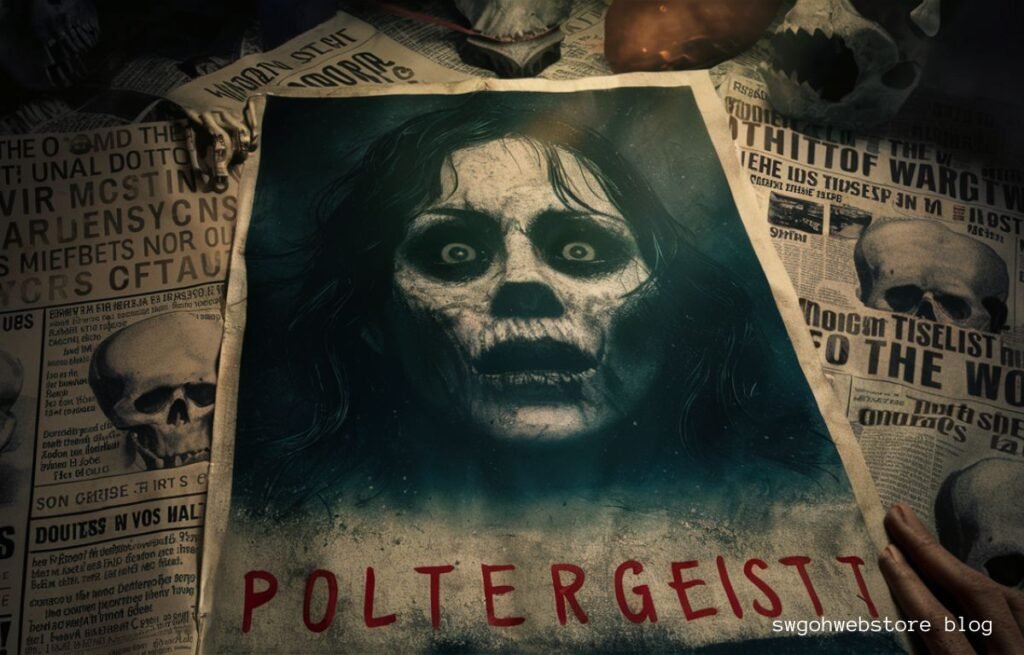
The 1982 Movie Poltergeist Used Real Skeletons As – Tymoff has had a broader impact on the movie-making industry, influencing ethical standards, production practices, and audience perceptions. The controversy surrounding the film prompted significant discussions and changes within the industry.
Firstly, the ethical implication of using real human remains sparked debates about the treatment of sensitive materials in filmmaking. This led to the establishment of stricter guidelines and regulations regarding the use of props and effects that resemble human anatomy. These guidelines ensure that ethical considerations are prioritized in future productions.
Secondly, the controversy highlighted the importance of transparency in filmmaking. Audiences became more aware of the behind-the-scenes processes and demanded openness from filmmakers. This shift towards transparency has encouraged greater accountability and trust between filmmakers and their audiences.
Thirdly, the use of real skeletons in “Poltergeist” influenced advancements in special effects technology. Filmmakers began exploring alternative methods, such as CGI and advanced animatronics, to achieve realistic effects without compromising ethical standards. These technological innovations have since become integral to modern filmmaking, offering new creative possibilities while upholding ethical integrity.
Furthermore, the legacy of “Poltergeist” has shaped how horror films are perceived and produced. The film’s association with supernatural occurrences and the alleged “Poltergeist curse” has added a layer of intrigue and mystique to its narrative. This has influenced storytelling in the horror genre, emphasizing the psychological impact of films beyond their on-screen scares.
Also Read: Mastering Digital Success with Rownavigator.com
Understanding Viewer Anxiety: What Truly Disturbs Audiences?
Understanding what truly disturbs audiences in horror films involves delving into psychological and emotional triggers that evoke fear and discomfort. Horror films often capitalize on primal fears rooted in human psychology, such as fear of the unknown, supernatural entities, and existential threats.
The suspense and tension built through storytelling techniques play a crucial role in unsettling audiences. These films create anticipation and uncertainty, leaving viewers on edge as they await the resolution of terrifying scenarios. The fear of what might happen next can be more unsettling than explicit depictions of horror.
Furthermore, horror films often explore themes that tap into societal anxieties and taboos. They may reflect deeper fears related to death, isolation, loss of control, or the violation of social norms. By confronting these fears in a controlled environment, horror films allow audiences to confront and process their anxieties in a safe context.
The use of visual and auditory stimuli also contributes to viewer anxiety. Creepy atmospheres, eerie soundtracks, and unsettling visuals can intensify the emotional impact of horror films. These elements immerse viewers in the frightening narrative, heightening their sense of unease and vulnerability.
Moreover, the portrayal of grotesque or unsettling imagery can provoke strong emotional reactions. Whether through practical effects, makeup, or digital enhancements, filmmakers strive to create visuals that resonate with viewers on a visceral level. The effectiveness of these techniques lies in their ability to evoke fear and discomfort, triggering a primal response in audiences.
Advancements in Special Effects Technology and Their Influence
Advancements in special effects technology have revolutionized the way filmmakers create visual spectacles and immersive experiences for audiences. These advancements encompass a range of techniques, from computer-generated imagery (CGI) to sophisticated animatronics and practical effects, enhancing storytelling possibilities in modern cinema.
CGI, or computer-generated imagery, allows filmmakers to generate realistic environments, creatures, and effects that were previously difficult or impossible to achieve. This technology has expanded creative horizons, enabling filmmakers to visualize fantastical worlds and extraordinary scenarios with unprecedented detail and realism.
In addition to CGI, advancements in animatronics have transformed practical effects in movies. Animatronics are lifelike robotic devices controlled by computers or puppeteers, capable of intricate movements and expressions. These technologies bring characters and creatures to life in ways that captivate audiences and enhance the cinematic experience.
Furthermore, the integration of practical effects with digital enhancements has become commonplace in modern filmmaking. Filmmakers combine traditional techniques, such as makeup and prosthetics, with CGI to create seamless visual effects that blur the line between reality and fantasy. This hybrid approach allows for greater flexibility and creativity in visual storytelling.
Moreover, advancements in special effects technology have democratized filmmaking, making high-quality visual effects more accessible to independent filmmakers and smaller production teams. Affordable software and equipment empower filmmakers to realize their creative visions without the need for extensive budgets or studio backing.
Delving into the Fascination with Horror and Realism in Society
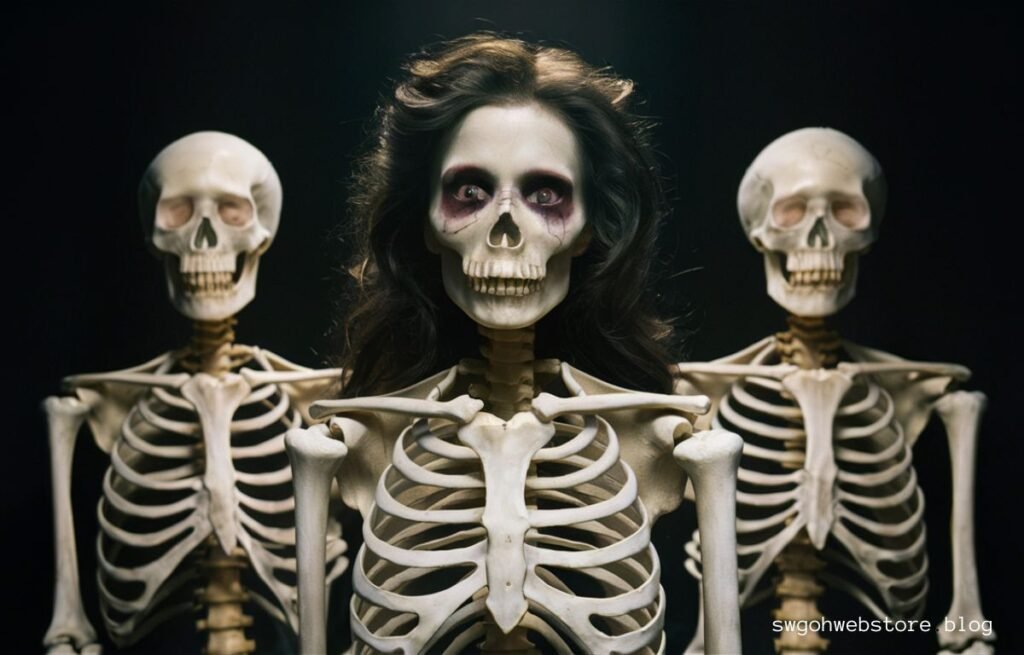
The fascination with horror and realism in society stems from humanity’s innate curiosity and desire to confront fears in a controlled environment. Horror films, in particular, serve as a safe outlet for exploring primal emotions and confronting existential anxieties that resonate deeply with audiences.
Horror’s appeal lies in its ability to provoke intense emotional responses through suspense, fear, and dread. By confronting fears in a fictional context, viewers can experience a cathartic release and gain a sense of empowerment over their own anxieties. This psychological phenomenon explains why horror remains a popular genre despite its unsettling themes.
Realism adds another layer of intrigue to horror films by grounding supernatural or extraordinary elements in believable settings. When horror narratives feel plausible, they become more immersive and relatable to audiences. This blend of realism and fantasy heightens the emotional impact of horror films, making them more resonant and memorable.
Furthermore, horror films often reflect societal fears and concerns of their time, serving as a mirror to cultural anxieties. Themes such as technological dystopia, environmental catastrophe, and social alienation are frequently explored through the lens of horror, offering commentary on contemporary issues and sparking critical reflection.
Moreover, advancements in filmmaking technology have enhanced the realism of horror films, allowing filmmakers to create more immersive and terrifying experiences for audiences. Cutting-edge special effects, realistic prosthetics, and atmospheric sound design contribute to the authenticity of horror narratives, intensifying viewer engagement and emotional responses.
The Impact of the Poltergeist Controversy on Future Filmmaking
The controversy surrounding the 1982 Movie Poltergeist Used Real Skeletons As – Tymoff has left a lasting impact on future filmmaking practices, influencing ethical considerations, production standards, and audience expectations in several keyways.
Firstly, the ethical implications raised by the use of real human remains prompted the film industry to reassess its approach to prop and effect creation. This controversy highlighted the importance of respecting human dignity and cultural sensitivities in filmmaking, leading to stricter guidelines and regulations regarding the use of sensitive materials.
Secondly, the controversy underscored the need for transparency and accountability in filmmaking practices. Audiences became more vigilant about the ethical treatment of props and effects, demanding honesty and clarity from filmmakers regarding their production methods. This shift towards transparency has fostered greater trust between filmmakers and their audiences.
Thirdly, the Poltergeist controversy spurred advancements in special effects technology. Filmmakers began exploring alternative methods, such as CGI and advanced animatronics, to achieve realistic effects without compromising ethical standards. These technological innovations have since become integral to modern filmmaking, offering new creative possibilities while upholding ethical integrity.
Moreover, the legacy of Poltergeist has influenced storytelling in the horror genre and beyond. The film’s association with supernatural occurrences and the alleged “Poltergeist curse” has added a layer of intrigue and mystique to its narrative, shaping audience expectations for eerie and compelling storytelling.
The 1982 Movie Poltergeist Used Real Skeletons As – Tymoff Final Words
The revelation that real human skeletons were used as props in “Poltergeist” has sparked enduring discussions about ethics, authenticity, and the boundaries of filmmaking. This controversy continues to resonate within the film industry and among audiences, raising important questions about the treatment of human remains and the responsibilities of filmmakers.
Despite the passage of time, the legacy of “Poltergeist” as a groundbreaking horror film remains intertwined with the controversy surrounding its production methods. The film’s use of real skeletons has become a cautionary tale, reminding filmmakers of the ethical considerations involved in creating realistic effects.
Moreover, the controversy surrounding “Poltergeist” has influenced the evolution of filmmaking practices. It has prompted advancements in special effects technology and stricter adherence to ethical guidelines, ensuring that future productions prioritize respect for human dignity and cultural sensitivities.
Furthermore, the enduring impact of “Poltergeist” extends beyond its production controversies. The film has left an indelible mark on the horror genre, inspiring filmmakers to push creative boundaries while maintaining ethical integrity in their storytelling.
Frequently asked questions (FAQs) about the controversy surrounding The 1982 Movie Poltergeist Used Real Skeletons As – Tymoff
Did the movie “Poltergeist” really use real human skeletons?
Yes, it has been widely reported that real human skeletons were used as props in certain scenes of the movie “Poltergeist,” particularly in the pool scene where JoBeth Williams’ character falls into a muddy pool filled with skeletons.
Why did the filmmakers choose to use real skeletons?
The decision to use real skeletons was reportedly made for budgetary reasons. At the time of the film’s production, real skeletons were cheaper and more readily available than creating realistic-looking props from scratch.
What was the public and industry reaction to the use of real skeletons?
There was significant public outcry and debate surrounding the ethical implications of using real human remains in a film. Advocacy groups and individuals raised concerns about the respect for human dignity and cultural sensitivities.
Was the use of real skeletons legal?
While the use of real skeletons in filmmaking was not uncommon at the time, it raised legal and ethical questions about the sourcing and treatment of human remains. Today, there are stricter regulations and guidelines in place regarding the use of sensitive materials in film productions.
Did the controversy impact the actors and crew of “Poltergeist”?
Yes, the use of real skeletons reportedly created an eerie and uncomfortable atmosphere on set. Some cast and crew members expressed unease and discomfort with the use of human remains during filming.
What is the “Poltergeist curse”?
The “Poltergeist curse” refers to the series of unfortunate events that affected several cast members after the release of the film, including untimely deaths and tragedies. While often attributed to the use of real skeletons, it remains a subject of speculation and debate.
How has the controversy influenced filmmaking practices today?
The controversy surrounding “Poltergeist” has led to increased scrutiny and awareness regarding the ethical treatment of props and effects in filmmaking. It has influenced advancements in special effects technology and encouraged filmmakers to prioritize transparency and respect for ethical standards.
What lessons can be learned from the “Poltergeist” controversy?
The controversy serves as a reminder of the importance of ethical considerations and responsible filmmaking practices. It highlights the impact of storytelling choices on audiences and the enduring legacy of films in popular culture.

Emily, an 8-year veteran, blends tech savvy with wanderlust. His fashion-forward perspective and business acumen create captivating content. Explore realms where innovation meets style.